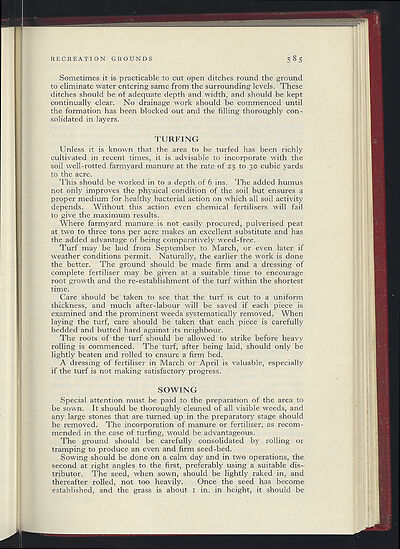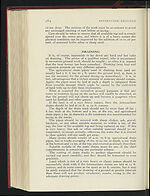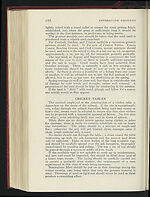1938-39
(619)
Download files
Complete book:
Individual page:
Thumbnail gallery: Grid view | List view

RECREATION 'GROUNDS
5
8
5
Sometimes it is practicable to cut open ditches round the ground
to eliminate water entering same from the surrounding levels. These
ditches should be of adequate depth and width, and should be kept
continually clear. No drainage work should be commenced until
the formation has been blocked out and the filling thoroughly con-
solidated in layers.
TURFING
Unless it is known that the area to be turfed has been richly
cultivated in recent times, it is advisable to incorporate with the
soil well-rotted farmyard manure at the rate of 25 to
30
cubic yards
to the acre.
This should be worked in to a depth of 6 ins. The added humus
not only improves the physical condition of the soil but ensures a
proper medium for healthy bacterial action on which all soil activity
depends. Without this action even chemical fertilisers will fail
to give the maximum results.
Where farmyard manure is not easily procured, pulverised peat
at two to three tons per acre makes an excellent substitute and has
the added advantage of being comparatively weed-free.
Turf may be laid from September to March, or even later if
weather conditions permit. Naturally, the earlier the work is done
the better. The ground should be made firm and a dressing of
complete fertiliser may be given at a suitable time to encourage
root growth and the re-establishment of the turf within the shortest
time.
Care should be taken to see that the turf is cut to a uniform
thickness, and much after-labour will be saved if each piece is
examined and the prominent weeds systematically removed. When
laying the turf, care should be taken that each piece is carefully
bedded and butted hard against its neighbour.
The roots of the turf should be allowed to strike before heavy
rolling is commenced. The turf, after being laid, should only be
lightly beaten and rolled to ensure a firm bed.
A dressing of fertiliser in March or April is valuable, especially
if the turf is not making satisfactory progress.
SOWING
Special attention must be paid to the preparation of the area to
be sown. It should be thoroughly cleaned of all visible weeds, and
any large stones that are turned up in the preparatory stage should
be removed. The incorporation of manure or fertiliser, as recom-
mended in the case of turfing, would be advantageous.
The ground should be carefully consolidated by rolling or
tramping to produce an even and firm seed-bed.
Sowing should be done on a calm day and in two operations, the
second at right angles to the first, preferably using a suitable dis
tributor. The seed, when sown, should be lightly raked in, and
thereafter rolled, not too heavily. Once the seed has become
established, and the grass is about z in. in height, it should be
5
8
5
Sometimes it is practicable to cut open ditches round the ground
to eliminate water entering same from the surrounding levels. These
ditches should be of adequate depth and width, and should be kept
continually clear. No drainage work should be commenced until
the formation has been blocked out and the filling thoroughly con-
solidated in layers.
TURFING
Unless it is known that the area to be turfed has been richly
cultivated in recent times, it is advisable to incorporate with the
soil well-rotted farmyard manure at the rate of 25 to
30
cubic yards
to the acre.
This should be worked in to a depth of 6 ins. The added humus
not only improves the physical condition of the soil but ensures a
proper medium for healthy bacterial action on which all soil activity
depends. Without this action even chemical fertilisers will fail
to give the maximum results.
Where farmyard manure is not easily procured, pulverised peat
at two to three tons per acre makes an excellent substitute and has
the added advantage of being comparatively weed-free.
Turf may be laid from September to March, or even later if
weather conditions permit. Naturally, the earlier the work is done
the better. The ground should be made firm and a dressing of
complete fertiliser may be given at a suitable time to encourage
root growth and the re-establishment of the turf within the shortest
time.
Care should be taken to see that the turf is cut to a uniform
thickness, and much after-labour will be saved if each piece is
examined and the prominent weeds systematically removed. When
laying the turf, care should be taken that each piece is carefully
bedded and butted hard against its neighbour.
The roots of the turf should be allowed to strike before heavy
rolling is commenced. The turf, after being laid, should only be
lightly beaten and rolled to ensure a firm bed.
A dressing of fertiliser in March or April is valuable, especially
if the turf is not making satisfactory progress.
SOWING
Special attention must be paid to the preparation of the area to
be sown. It should be thoroughly cleaned of all visible weeds, and
any large stones that are turned up in the preparatory stage should
be removed. The incorporation of manure or fertiliser, as recom-
mended in the case of turfing, would be advantageous.
The ground should be carefully consolidated by rolling or
tramping to produce an even and firm seed-bed.
Sowing should be done on a calm day and in two operations, the
second at right angles to the first, preferably using a suitable dis
tributor. The seed, when sown, should be lightly raked in, and
thereafter rolled, not too heavily. Once the seed has become
established, and the grass is about z in. in height, it should be
Set display mode to:
![]() Universal Viewer |
Universal Viewer | ![]() Mirador |
Large image | Transcription
Mirador |
Large image | Transcription
| Games and sports in the army > 1938-39 > (619) |
|---|
| Permanent URL | https://digital.nls.uk/248744653 |
|---|
| Description | 'Games and Sports in the Army' was an annual publication produced by the British War Office between the 1930s and 1960s. This included the Second World War. It outlines the rules and regulations for games and sports played by members of the armed forces. It features names and photographs of team members, and examples of contemporary advertising. |
|---|---|
| Shelfmark | GWB.52 |

